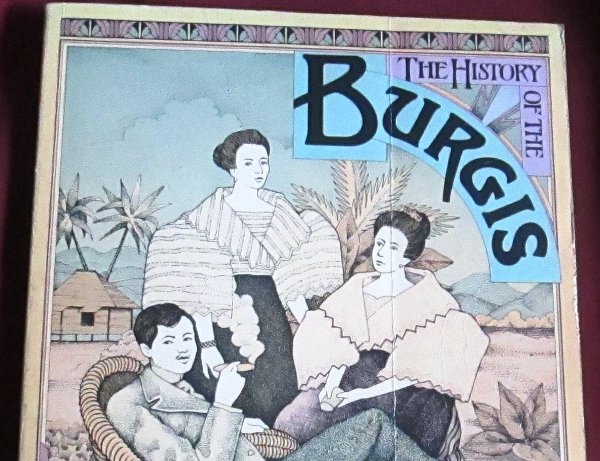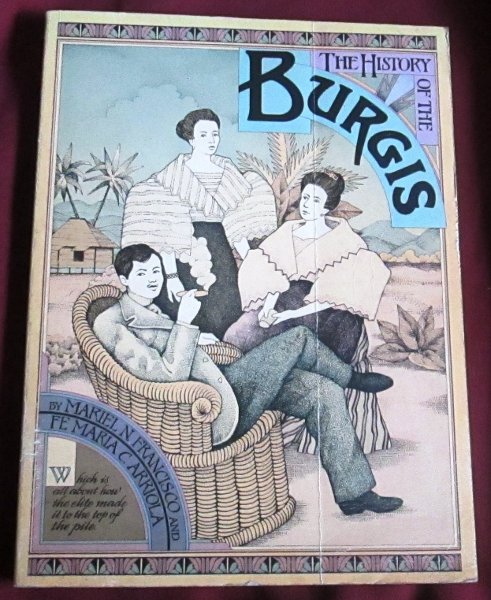
The bestselling GCF book, “The History of the Burgis”
The way her friends-collaborators tell it, working with Gilda Cordero Fernando was among the best things that happened in their lives. Everything starts with good food—from the thick hot chocolate paired with fresh pinipig to the paella negra. Feeding fellow cultural workers well was also one way of enticing them to join, and reinforcing their commitment to, her projects.
During the Book Development Association of the Philippines-sponsored online literary festival called “Pandemic Playbook,” playwright Rody Vera recalled a merienda cena at Fernando’s house on Panay Ave., Quezon City. She gave him a copy of Budhi Journal containing her stories and articles. Bookmarked was a page with her short story “The Magic Circle.” The festival was part of the Manila International Book Fair.
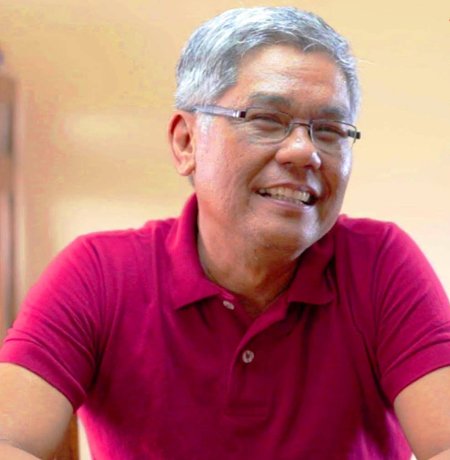
Playwright Rody Vera
He said, “It is the story of Jepoy, a young boy invited to attend a wedding inside a balete tree. The saying goes, ‘Umaaraw, Umuulan, Kinakasal ang Tikbalang.’ This wedding happens when rain falls simultaneously with the sun shining brightly. His mangy dog Galis accompanies him inside a balete, and he is introduced to supernatural beings, legendary characters, talking animals, including his dog, and finally a kapre who steals the scene from the newlywed tikbalang couple by dying and leaving Jepoy with an appeal for him to become the messenger to warn humans of the great destruction they’ve been doing to earth and their own folklore.”
He found the story “eclectic and hilarious, true to Gilda form. Ever since I met her, when she commissioned me to write Luna: Isang Romansang Aswang in 1999 (directed by Anton Juan), she was already enamored of these beings from some other layer of heaven that got tucked in somewhere away from the judgmental eyes of the human public. She fed me books on Pinoy anthropology and folklore, gave me a copy of her small book with her painting, The Aswang Inquiry. From there, I got more interested not only in the aswang but in other mythical figures: the kapre, the tiyanak, the diwata.”
Then artistic director of Dulaang UP (University of the Philippines) Jose Estrella asked him if he had materials that she could work on with an eye for an audience of young people. Vera said, “The universe set it all up according to Gilda’s wishes because nothing else came to my mind but her story. Soon after, the Dulaang UP team with Jose and I were having merienda at Gilda’s.”
Like Luna, which featured the fabulous costumes of Fernando’s friends Steve de Leon, Rajo Laurel, Barge Ramos, Ann Wizer, among others, Umuulan Umaaraw had what Vera described as “the magnificent costumes by Leeroy New, Lex Marcos’s beautiful production design and the late Don Salubayba’s shadow puppetry. When she saw this, Gilda had all praises for the visual delight this production offered.”
Fernando had one more dream project that she wanted Vera to be involved in. He said, “She showed me her illustrations on yellow pad, with notes scribbled all around the illustrations. The image she drew was a recurring dream: seven old babaylan, perched on top of long poles, all around the theater space. They’re all meditating, contemplating the creation of the world.”
The two brainstormed on many ideas, but “never got to pull this play cycle off,” he said. “Lingering in my mind is the idea of Darna as Narda, a limping domestic worker serving a group of elderly new-age believer ladies, not unlike those that attend Gilda’s merienda cena.”
After she died in August this year, Vera felt that “this journey with her needs to go on. She must be in one of the layers of heaven she had been dreaming about. Or she may be one of those babaylan meditating on the eternal creation that keeps happening beyond our time-bound consciousness.”
Despite her being gone, he dreams of the play cycle that “starts with the seven babaylan conjuring the creations of the world up to the birth of Darna will eventually be staged.”
Corazon S. Alvina, head of the Museo ng Kaalamang Katutubo and former production manager of Fernando’s GCF Books, clarified that what the writer-publisher produced was “not coffee table books but illustrated cultural history. Gusto niya laging iba at naiiba (she wanted something different and unique).”

Corazon S. Alvina, head of the Museo ng Kaalamang Katutubo
Alvina had the pleasure of working with illustrious book designers that Fernando tapped: Nik Ricio, Frey Cabading, Edwina K. Arroyo, Maggie Simpliciano. She described the work process as “fun, the most creative thing I’ve been engaged in.”
She said GCF Books released a book a year. The process started with Fernando calling a meeting at her home. Alvina’s position was “to mediate between Gilda and the designer.” Meetings started at breakfast, followed by merienda, then lunch, another merienda and finally, dinner.
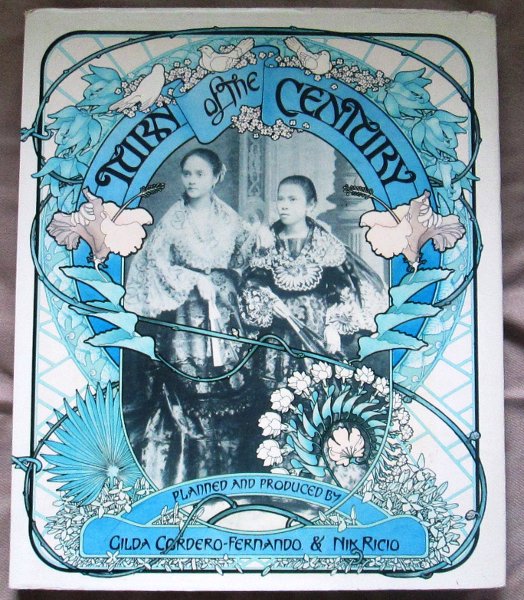
Collaboration between Gilda Cordero Fernando and Nik Ricio
There were no computers yet, no disks and USBs. They worked with real layout sheets. The final paste-up was a physical thing, not a PDF. She noted how her boss had “certain attachments to certain visuals” even if these were already put in a folder labeled “Rejects.” Alvina caught her thrice sneaking back the rejected photos until the production manager brought home the folder.
Preparatory meetings lasted from three to four months. The artist submitted samples of fonts, among others. As part of the team, Alvina and the artist convinced Fernando “to think like us, to see that some books needed formal photography.”
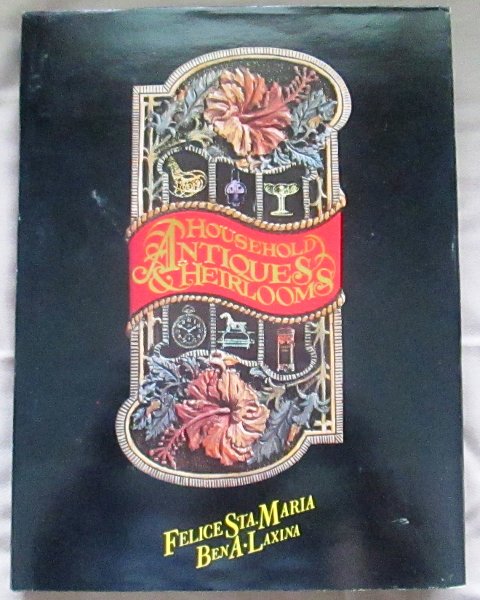
Cover of Household Antiques and Heirlooms
For Household Antiques and Heirlooms by Felice Sta. Maria, the team went to Vigan to take photos of precious antiques in old private homes. They were almost heartbroken to learn that years later, 30 percent of those houses were demolished.
She said GCF Books was “a trendsetter. It was brave in trying new things and went out and did it. We prided ourselves in our books.”
